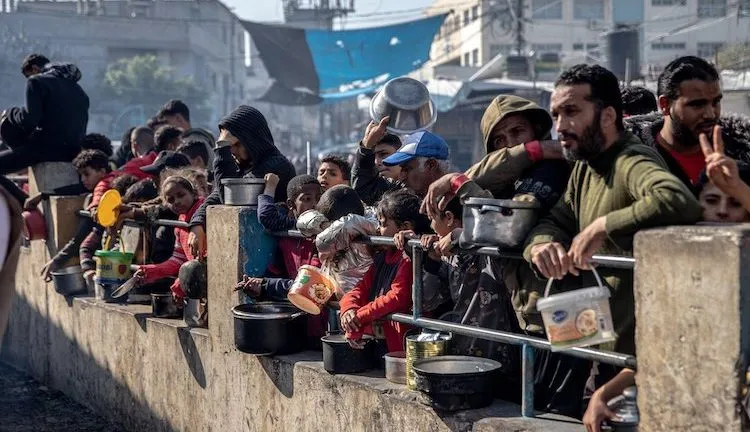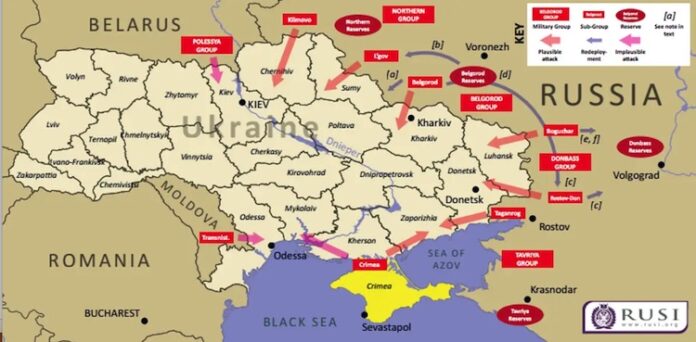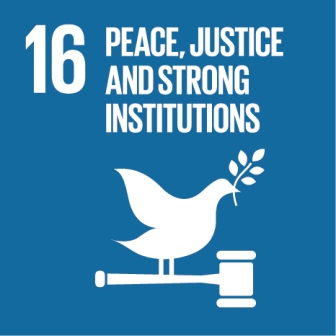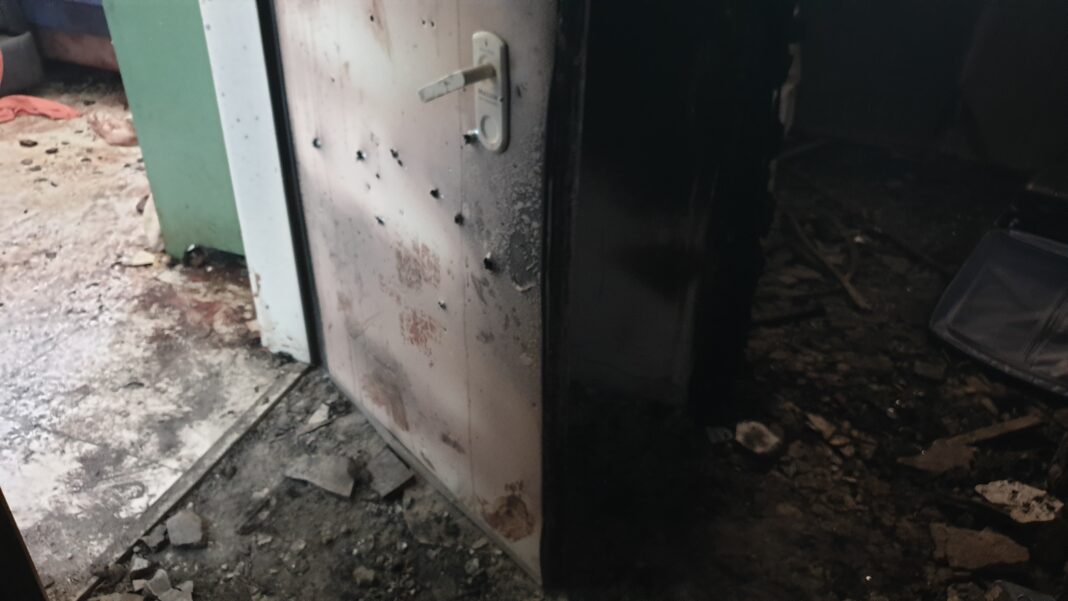There is a profound misunderstanding of the events unfolding in Gaza Strip and Israel. Most of the public doesn't even attempt to delve into it. As for the news, they provide only fragmented information and don't offer the full perspective. Moreover, there are entities deliberately distorting information.
【Tel Aviv INPS Japan=Roman Yanushevsky】

More than 37,000 casualties in Gaza, including children, numerous internally displaced persons, extensive destruction, reports of hunger, and accusations of genocide. The situation of Palestinians in the sector is dire.(P-07)|RUSSIAN|CHINESE|JAPANESE|
The current war in the Gaza Strip is related to several of the United Nations’ sustainable development goals simultaneously: Goal 2 – to reduce hunger, and Goal 16 – peace, justice, and strong institutions.
When analyzing wars and conflicts around the world, attention should be paid to how they began. The war in Gaza started with a meticulously planned bloody terrorist attack on Israel on October 7th.
The secret plan of Hamas
Since 2007, the Palestinian Islamist group Hamas has been in control of the Gaza Strip. It is recognized as a terrorist organization by several countries. Its charter explicitly states its goal of destroying the State of Israel. This is not mere rhetoric but the group’s fundamental aspiration, inevitably leading to regular escalations.
In recent years, Hamas had been working on a plan to invade Israeli territory, carry out the mass killing of Israelis and take hostages. The goal of the attack was to attract global attention to the Palestinian cause and to provoke Israel into deploying troops into the Gaza Strip.
The plan was developed secretly by a small group of leaders within the organization. The operatives prepared for the attack over several years, understanding only in general terms what was expected of them. However, the specific details were only presented to them early on Saturday morning, October 7th, just hours before the invasion took place.
On that day in Israel, the religious holiday of Shmini Atzeret was being observed, coinciding with the traditional day of rest for Jews, Shabbat. Hamas deliberately exploited this to lower Israeli vigilance.

At the time, Israel’s political leadership believed Hamas had moved away from violence. The military and intelligence did not anticipate a large-scale attack, resulting in fewer forces deployed on the ground than usual. Additionally, Israel relied on its “smart fence” – a strip of obstacles equipped with sensors and an automatic firing system – along the Gaza border. However, the militants meticulously planned every detail, finding individual solutions to circumvent each element of Israeli defense.
Early in the morning on October 7th, Israelis were unexpectedly showered with a salvo of rockets – militants fired around three thousand rockets at Israeli towns and villages within the first three hours of the attack, causing chaos and overwhelming the defense systems.
Simultaneously, thousands of well-prepared and heavily armed militants breached Israel’s “smart fence” at multiple points, using drones to disable sections and infiltrating Israeli territory. Some flew over the fence on paragliders, others approached by land or sea. Israeli forces defending the perimeter were swept aside and destroyed. Israelis had not anticipated such a massive attack, and individual tanks and patrols were no match for thousands of well-prepared fighters.
Despite intelligence within Israel’s military intelligence indicating preparations for such an attack, the leadership of the security services and the military did not believe Hamas would go through with it. As a result, Israel paid a very high price. Militant squads seized a number of IDF bases and strategic points along the border and conducted a brutal massacre in most settlements and some cities within a 20-kilometer radius of the border with the sector.
In border settlements, militants killed everything in their path – people and domestic animals. They broke into homes and shot the inhabitants. Some of the locals managed to barricade themselves in fortified rooms with stronger walls against rocket fragments but not against terrorists with Kalashnikovs.
Later, ordinary residents of the Gaza Strip, including teenagers, joined in looting these settlements and setting fire to homes, seeking to inflict more damage. In some cases, they found hiding Israelis and handed them over to the militants.
Hamas fighters gleefully posted videos of their atrocities on social media. There was at least one instance where they went live on Facebook from a hostage’s account, mocking them in front of their friends and family, and then killing some of the captives.
In settlements like Be’eri, Kfar Aza, Nir Oz, Nir Am, Nahal Oz, Mefalsim, and others, 10-15% of the population perished, while others were taken hostage and abducted.

Overall, about 1200 Israelis and citizens of other countries perished in a single day. Armed police and individual soldiers who joined them resisted the militants’ special forces, but the forces were too uneven.
Bloodshower at the Nova musical festival
During the night of October 7th, about five kilometers from the border, the electronic music festival “Nova” was taking place in a natural setting, attended by approximately three thousand people.
The partygoers were attacked from different directions by Palestinian militants. Although most festival participants managed to evacuate the area quickly before the jihadists’ attack, many people remained when militants armed with rifles and grenade launchers appeared.
At least 364 people were killed on the scene. Several stories of personal heroism evolved. Off-duty and unarmed IDF soldier Aner Shapira saved dozens of lives by organizing resistance. He caught grenades thrown into the shelter where frightened festival participants took a hideaway and threw them back towards the attackers. He returned seven grenades to the attackers; the eighth exploded in his hands, and Aner tragically lost his life.

In another incident, clothing vendor Ben Shimoni quickly understood the situation. Militants had blocked movement on the only road leading away from the festival and were shooting at all vehicles. Ben loaded as many festival participants as he could into his car and took unconventional action. He drove through a hole in the fence made by militants into Gaza territory and, navigating through the most dangerous area on Palestinian territory, returned to Israel through another hole in the fence. He successfully rescued people twice, but when he returned a third time to save a friend, he was shot and killed.
There are numerous accounts of militants committing brutal sexual assaults on captured girls, followed by their mutilation while still alive. After the acts of violence, they were killed. Around forty festival participants were taken hostage by Islamists into the Gaza Strip.
The exact number of casualties on October 7th and the number of hostages remains unknown due to the chaos on the ground and Hamas’ refusal to share information about the individuals they are holding.
By the end of November, with the involvement of international mediators, Israel managed to negotiate the release of nearly half of approximately 250 hostages in exchange for a temporary ceasefire and the release of Palestinian prisoners from Israeli prisons convicted of terrorist activities. Since then, complex and so far fruitless negotiations have been ongoing with Hamas for the release of the remaining hostages.
The Gaza war
The attack on October 7th in Israel is recognized as the deadliest terrorist attack in the country’s history. It took three days to fully clear Israeli territory of militants. By the end of October, Israel initiated a military operation in the Gaza Strip with two objectives: to free the hostages and to destroy Hamas, thereby neutralizing its military capabilities.
Since Hamas seized power in the Gaza Strip in the summer of 2007, it has actively prepared for war with Israel. Billions of dollars in aid intended for building hospitals, schools and civil infrastructure for Palestinians were deliberately invested in military infrastructure instead. An extensive network of tunnels was constructed underground, used by militants for hiding, movement, holding hostages, and attacking Israeli soldiers. Meanwhile, not a single bomb shelter was built for ordinary Palestinians.
The group specifically planned to capture hostages, knowing that Israeli society places a higher value on human life, which would make this a painful blow to Israelis. Most hostages taken were civilians whose homes were invaded by militants, with only some being military personnel. Among those held in Gaza were citizens of other countries, not just Israelis.
Hamas leadership are cynical religious fanatics for whom human life holds no value. Therefore, the attack plan anticipated Israeli retaliation against terrorist targets in the Gaza Strip.
Hamas believes that the higher the death toll in the sector, the better it is for the group as it increases international pressure on Israel. Consequently, Hamas not only fails to protect the civilian population in the sector but deliberately places military and terrorist infrastructure in residential areas, launches attacks from there against Israeli positions, loots incoming aid and food supplies to artificially create a humanitarian crisis.
Paradoxically, it is the Israeli army that makes efforts to reduce casualties. Before commencing operations in any given neighborhood, the army issues warnings to residents over several days, thereby sacrificing the element of surprise and allowing some terrorists to escape alongside civilians. Strikes are meticulously planned to minimize losses.
Another weapon actively used by Hamas is deception. Data on Gaza casualties only come from sources under the group’s control, making verification impossible. Experts note that the published statistics on deaths are highly illogical, clearly inflated, and manipulated. However, due to the lack of alternative figures, the UN and other countries are forced to rely on what is available.
Historical practices show that during conflicts, all deaths and those naturally dying in Gaza are automatically attributed to Israel. This includes not only militants killed in combat or by “friendly fire,” but also people who die from diseases or old age, just as in peacetime. Hamas artificially inflates the number of dead children and women, counting on sympathy from people unfamiliar with the specifics of the Palestinian-Israeli conflict.
Given that this is a hybrid war between states and a terrorist organization, Hamas heavily relies on propaganda spread through multiple channels. Independent journalism in Gaza does not exist; free journalists have long left the sector or perished at the hands of Islamists. Consequently, all so-called reporters in Gaza engage not in journalism but in propaganda.
Another phenomenon existing for years is “Pallywood,” where disguised locals portray wounded and dying due to Israeli strikes. At times, these actors forget their role, opening their eyes or moving. However, many worldwide are willing to believe these staged performances.
The extensive military actions and Hamas’ deliberate placement of military assets and tunnels in residential areas have led to significant destruction in certain Gaza sectors. Among the Palestinian casualties are civilians.
Back in autumn, Israel demanded Hamas release all hostages and return the bodies of those killed. This could have ended the war, but Hamas is not interested in that. Hostages are merely a tool of pressure on Israel. Periodically, the group releases threatening videos with kidnapped individuals, attempting to influence public opinion in Israel. If Hamas desired, it could have ended the war long ago, but now that seems unrealistic.
War on Multiple Fronts
While often not highlighted in the news, Israel is actually facing not only Hamas but the entire so-called “Axis of Resistance” – a network of militarized groups in the Middle East created by Iran. This axis includes Hezbollah in Lebanon, Ansar Allah (the Houthis) in Yemen, pro-Iranian groups in Syria and Iraq. All of these groups regularly shell Israel or launch drones towards its territory. However, the main source of this aggression is Iran herself. Iran, whose current Islamic regime views the destruction of the State of Israel as its mission, stands as the primary antagonist.

In April, for the first time in the history of its regime, Iran directly attacked Israeli territory with hundreds of rockets and drones. With the involvement of the United States and several moderate Arab regimes in the region, this threat was neutralized. The rockets and drones did not cause significant damage, as the vast majority were intercepted upon approach. At the request of the US, Israel conducted a relatively restrained but demonstrative strike, destroying a modern air defense system that was protecting a crucial strategic site in Iran.
The foremost Iranian proxy abroad is the Lebanese group Hezbollah. Just a day after Hamas’s attack on October 8th, Hezbollah began shelling neighboring Israel without any apparent cause, in a show of solidarity with the Palestinian group.
Gradually, Hezbollah has been increasing pressure on Israel, inflicting significant damage on Israeli towns and settlements near the border. Over the past six months, the United States and France have been making diplomatic efforts to restrain both Israel and Hezbollah, aiming to prevent this conflict from escalating into an unforeseen regional war.
However, these negotiations have yet to yield any significant breakthroughs, and it is doubtful they will. The question of an impending large-scale war between Israel and Lebanon looms large against the backdrop of daily shelling from Israeli territory. This war could potentially commence in the coming weeks.
Roof on Fire
As early as October, residents of the shelled areas in northern Israel began leaving their homes out of fear for their lives. Later, a centralized evacuation was carried out.
These people—more than 61,000 individuals—are now living with friends and relatives or in hotels paid for by the government. They still cannot return home because Hezbollah continues to heavily shell northern Israel, sometimes dozens of times a day.
According to a survey by Tel-Hai College, 13% of evacuated residents from northern Israel stated that they will definitely not return to their apartments and houses because they fear Hezbollah attacks following a similar scenario as Hamas.
Additionally, over 70,000 residents from communities in the south, living near the Gaza Strip, were also forced to leave their homes due to the fighting in the area. Some of these internally displaced persons have already been able to return home.
Israel’s land area is only 22,000 square kilometers, whereas for comparison, Japan’s area is 378,000 square kilometers. During intense rocket attacks on Israel, there are almost no peaceful places left within it. Therefore, there are tens of thousands of other families who have sent their children abroad, spending their savings just to get them away from the war.

Hana Tzipori, a resident of central Israel, hasn’t been living in Israel for long. She repatriated in November 2022 from Russia after a “special military operation” against Ukraine had begun. At that time, she couldn’t have imagined that war would find them in Israel too.
“On the morning of October 7, we were sound asleep when suddenly the air raid sirens went off,” recounted Hana. “The sirens wouldn’t stop, and we rushed to take cover in a reinforced room. It was very scary because we didn’t understand what was happening. There were no preliminary signs of this. I saw fear in the eyes of my five-year-old son, and I was very anxious myself. We spent the entire day in that room under bombardment, reading the news non-stop. The moment Israel declared war on Hamas stood out to me especially. That’s when it became truly terrifying. War—it was a word from books, from history textbooks. And suddenly, it turns out it’s unfolding right next to you.”

According to her, reports of terrorists breaking into residential homes and killing people stripped them of their sense of security in their own home. Yet, the sense of reality was very blurred—it felt like a terrible dream.
“After the Home Front Command issued a recommendation for Israelis to stock up on food and supplies for three days, I realized I couldn’t take it anymore,” she continued. “I grabbed my mom and my two sons, and we flew to Cyprus. The prices of plane tickets skyrocketed, but luckily, we managed to buy them.”

Hana describes how they couldn’t relax for a long time in Cyprus, flinching at any loud noise. After seeing countless Hamas videos of brutal violence against Israelis, she developed PTSD. While in a safe neighboring country, her sons even made terrorists the main characters in their games. They continued to feel anxiety and fear, and the sight of blood triggered panic. Moreover, according to her, every time she heard Arabic spoken on the street, she was overcome with horror.
Hana and her family had to return to Israel one month later— the tourist season ended in Cyprus, all hotels, restaurants, and shops were closing, and they made the decision to return home.
Shai is a programmer who lives in the village of Kfar Vradim, just six kilometers from the border with Lebanon. Amidst the sharp escalation of the situation in the fall, he evacuated his wife and two young children to another country. They lived in Europe for over three months, but they were forced to return because their savings were running out, and his employer demanded his return to Israel to regularly attend the office.
The air raid sirens in his village sound every week. In neighboring villages, it’s every day. He hears drones and rockets flying past, Israeli defense systems intercepting them, and artillery responding to sources of fire in Lebanon. Shai has seen rockets from Shiite militants flying directly overhead towards deeper parts of Israel.
It turns out that he and his family live very close to the front lines. Yet their village has not been evacuated. He has nowhere else to go.
“We’re all on edge. I’m afraid to leave for work, leaving my wife and children alone. Thankfully, I often get permission to work from home,” says Shai. “Because of the constant anxiety, I started drinking every evening. I even smoke marijuana now to calm down, but it doesn’t help me relax. I’m always tense and worried about my family.”
The world in war

We were born and have lived most of our lives in relatively peaceful times. War for us is something that happens far away. In the news, in movies, in books. But the last few years have shown that war is much closer to us than it may seem.
The global system that emerged after World War II, which rejected war as a means of resolving conflicts, is gradually wearing down. Outdated mechanisms are ceasing to work. As a result, there are more wars in the world, and the anti-war immunity has been nearly lost. Our generation needs to develop a new system that will protect our children and grandchildren from war and give us all hope for a better future.”
INPS Japan
This article is brought to you by INPS Japan in partnership with Soka Gakkai International, in consultative status with UN ECOSOC.
Related Articles:
Israeli Disarmament Movement Steers Through Nuclear Ambiguity




